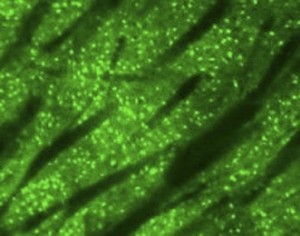kreitzer lab
neurological disease
Neural Activity and Plasticity in the Basal Ganglia
Home

Areas of Investigation
The research in our laboratory is focused on understanding the mechanisms controlling cellular, synaptic, and circuit function in the basal ganglia that control motor planning, learning, and movement. Our long-term goal is to understand how neural activity and plasticity in these circuits shapes motor behavior and how neurological disorders such as Parkinson's disease (PD) and Huntington's disease (HD) affect synaptic, cellular, and circuit function in the basal ganglia.
Significance
The control of movement is among the most fundamental functions of the nervous system. The basal ganglia, and the striatum in particular, play a critical role in the selection and learning of appropriate actions. Individuals suffering from movement disorders such as PD or HD have profound difficulties performing appropriate movements, yet the relation between aberrant neural activity and motor problems is not well understood. A thorough knowledge of the mechanisms underlying circuit function in the basal ganglia, both in health and disease, will provide a framework that can be used to develop novel treatments for neurological disorders.
Approaches
To address the functional properties of basal ganglia motor circuits, our laboratory applies a variety of experimental approaches. We use whole-cell patch-clamp electrophysiology in brain slices, which allows us to record and analyze the properties of synaptic currents from individual neurons. Transgenic animals expressing molecular markers in specific subpopulations of neurons allow for the in vitro and in vivo identification and modification of basal ganglia circuit function. Optogenetic manipulations provide a tool for cell-type specific manipulations in vitro and in vivo. Additionally, we use genetic and pharmacological animal models of human disease, as well as a battery of behavioral testing procedures.
Contributions
Two parallel basal ganglia pathways have been described, which are proposed to exert opposing influences on motor function. According to this classical model, activation of the direct pathway facilitates movement and activation of the indirect pathway inhibits movement. Imbalances in these circuits are thought to contribute to motor deficits in PD and HD. However, because this model has never been empirically tested, the specific function of these circuits in behaving animals remains unknown. We have developed the capability to directly activate basal ganglia circuitry in vivo, using optogenetic control of direct- and indirect-pathway medium spiny projection neurons (MSNs). Bilateral excitation of indirect-pathway MSNs elicited a parkinsonian state, distinguished by increased freezing, bradykinesia, and decreased locomotor initiations. In contrast, activation of direct-pathway MSNs reduced freezing and increased locomotion. In a mouse model of Parkinson’s disease, direct pathway activation completely rescued deficits in freezing, bradykinesia, and locomotor initiation. Our findings establish a critical role for basal ganglia circuitry in the bidirectional regulation of motor behavior and indicate that modulation of direct pathway circuitry may represent an effective therapeutic strategy for ameliorating parkinsonian motor deficits.
Questions Addressed in Ongoing Studies
- What is the functional role of neural activity in direct and indirect pathway MSNs?
- How is neural activity in the direct and indirect pathways integrated in basal ganglia output nuclei?
- How do striatal microcircuits function to shape direct and indirect pathway output?
- What role does dopamine play in striatal microcircuit function?
- How does loss of dopamine impact basal ganglia circuit function?
- How does dopamine modulate synaptic plasticity in the striatum?
- How can we restore basal ganglia circuit function in the absence of dopamine, such as during PD?


